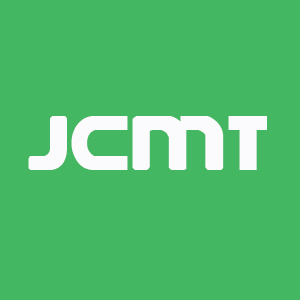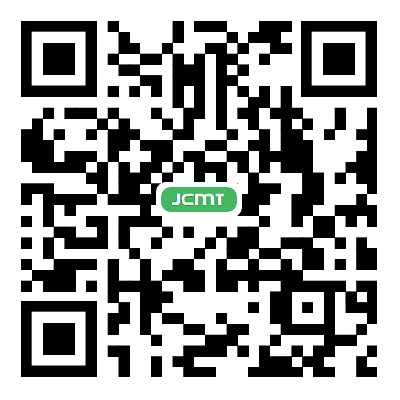REFERENCES
1. Aravindan N, Jain D, Somasundaram DB, Herman TS, Aravindan S. Cancer stem cells in neuroblastoma therapy resistance. Cancer Drug Resist 2019;2:948-67.
2. Aravindan N, Herman T, Aravindan S. Emerging therapeutic targets for neuroblastoma. Expert Opin Ther Targets 2020;24:899-914.
3. Sun SY, Hail N Jr, Lotan R. Apoptosis as a novel target for cancer chemoprevention. J Natl Cancer Inst 2004;96:662-72.
4. Peinemann F, van Dalen EC, Enk H, Berthold F. Retinoic acid postconsolidation therapy for high-risk neuroblastoma patients treated with autologous haematopoietic stem cell transplantation. Cochrane Database Syst Rev 2017;8:CD010685.
5. Reynolds CP, Matthay KK, Villablanca JG, Maurer BJ. Retinoid therapy of high-risk neuroblastoma. Cancer Lett 2003;197:185-92.
6. Bayeva N, Coll E, Piskareva O. Differentiating neuroblastoma: a systematic review of the retinoic acid, its derivatives, and synergistic interactions. J Pers Med 2021;11:211.
7. Redfern CP, Lovat PE, Malcolm AJ, Pearson AD. Gene expression and neuroblastoma cell differentiation in response to retinoic acid: differential effects of 9-cis and all-trans retinoic acid. Eur J Cancer 1995;31A:486-94.
8. Lima L, de Melo TCT, Marques D, et al. Modulation of all-trans retinoic acid-induced MiRNA expression in neoplastic cell lines: a systematic review. BMC Cancer 2019;19:866.
9. Yuza Y, Agawa M, Matsuzaki M, Yamada H, Urashima M. Gene and protein expression profiling during differentiation of neuroblastoma cells triggered by 13-cis retinoic acid. J Pediatr Hematol Oncol 2003;25:715-20.
10. Finklestein JZ, Krailo MD, Lenarsky C, et al. 13-cis-retinoic acid (NSC 122758) in the treatment of children with metastatic neuroblastoma unresponsive to conventional chemotherapy: report from the Childrens Cancer Study Group. Med Pediatr Oncol 1992;20:307-11.
11. Matthay KK, Reynolds CP. Is there a role for retinoids to treat minimal residual disease in neuroblastoma? Br J Cancer 2000;83:1121-3.
12. Ponzoni M, Bocca P, Chiesa V, et al. Differential effects of N-(4-hydroxyphenyl)retinamide and retinoic acid on neuroblastoma cells: apoptosis versus differentiation. Cancer Re ;55:853-61.
13. Lovat PE, Ranalli M, Corazzari M, et al. Mechanisms of free-radical induction in relation to fenretinide-induced apoptosis of neuroblastoma. J Cell Biochem 2003;89:698-708.
14. Maurer BJ, Metelitsa LS, Seeger RC, Cabot MC, Reynolds CP. Increase of ceramide and induction of mixed apoptosis/necrosis by N-(4-hydroxyphenyl)- retinamide in neuroblastoma cell lines. J Natl Cancer Inst 1999;91:1138-46.
15. Raffaghello L, Pagnan G, Pastorino F, et al.
16. Reynolds CP, Lemons RS. Retinoid therapy of childhood cancer. Hematol Oncol Clin N Am 2001;15:867-910.
17. Lovat PE, Corazzari M, Goranov B, Piacentini M, Redfern CP. Molecular mechanisms of fenretinide-induced apoptosis of neuroblastoma cells. Ann N Y Acad Sci 2004;1028:81-9.
18. Lovat PE, Ranalli M, Annichiarrico-Petruzzelli M, et al. Effector mechanisms of fenretinide-induced apoptosis in neuroblastoma. Exp Cell Res 2000;260:50-60.
19. Cuperus R, Tytgat GA, Leen R, et al. Pleiotropic effects of fenretinide in neuroblastoma cell lines and multicellular tumor spheroids. Int J Oncol 2008;32:1011-9.
20. Orienti I, Zuccari G, Carosio R, Montaldo PG. Improvement of aqueous solubility of fenretinide and other hydrophobic anti-tumor drugs by complexation with amphiphilic dextrins. Drug Deliv 2009;16:389-98.
21. Orienti I, Zuccari G, Bergamante V, et al. Fenretinide-polyvinylalcohol conjugates: new systems allowing fenretinide intravenous administration. Biomacromolecules 2007;8:3258-62.
22. Di Paolo D, Pastorino F, Zuccari G, et al. Enhanced anti-tumor and anti-angiogenic efficacy of a novel liposomal fenretinide on human neuroblastoma. J Control Release 2013;170:445-51.
23. Villablanca JG, London WB, Naranjo A, et al. Phase II study of oral capsular 4-hydroxyphenylretinamide (4-HPR/fenretinide) in pediatric patients with refractory or recurrent neuroblastoma: a report from the Children’s Oncology Group. Clin Cancer Res 2011;17:6858-66.
24. Maurer BJ, Kang MH, Villablanca JG, et al. Phase I trial of fenretinide delivered orally in a novel organized lipid complex in patients with relapsed/refractory neuroblastoma: a report from the New Approaches to Neuroblastoma Therapy (NANT) consortium. Pediatr Blood Cancer 2013;60:1801-8.
25. Villani MG, Appierto V, Cavadini E, et al. 4-oxo-fenretinide, a recently identified fenretinide metabolite, induces marked G2-M cell cycle arrest and apoptosis in fenretinide-sensitive and fenretinide-resistant cell lines. Cancer Res 2006;66:3238-47.
26. Sogno I, Venè R, Ferrari N, et al. Angioprevention with fenretinide: targeting angiogenesis in prevention and therapeutic strategies. Crit Rev Oncol Hematol 2010;75:2-14.
27. Ribatti D, Alessandri G, Baronio M, et al. Inhibition of neuroblastoma-induced angiogenesis by fenretinide. Int J Cancer 2001;94:314-21.
28. Ribatti D, Raffaghello L, Marimpietri D, et al. Fenretinide as an anti-angiogenic agent in neuroblastoma. Cancer Lett 2003;197:181-4.
29. Bassiri H, Benavides A, Haber M, Gilmour SK, Norris MD, Hogarty MD. Translational development of difluoromethylornithine (DFMO) for the treatment of neuroblastoma. Transl Pediatr 2015;4:226-38.
30. Lozier AM, Rich ME, Grawe AP, et al. Targeting ornithine decarboxylase reverses the LIN28/Let-7 axis and inhibits glycolytic metabolism in neuroblastoma. Oncotarget 2015;6:196-206.
31. Lewis EC, Kraveka JM, Ferguson W, et al. A subset analysis of a phase II trial evaluating the use of DFMO as maintenance therapy for high-risk neuroblastoma. Int J Cancer 2020;147:3152-9.
32. Sholler GLS, Ferguson W, Bergendahl G, et al. Maintenance DFMO Increases Survival in High Risk Neuroblastoma. Sci Rep 2018;8:14445.
33. Ladumor Y, Seong BKA, Hallett R, et al. Vitamin D receptor activation attenuates hippo pathway effectors and cell survival in metastatic neuroblastoma. Mol Cancer Res 2022;20:895-908.
34. Li S, He J, Li S, et al. Noscapine induced apoptosis via downregulation of survivin in human neuroblastoma cells having wild type or null p53. PLoS One 2012;7:e40076.
35. Rizeq B, Gupta I, Ilesanmi J, AlSafran M, Rahman MM, Ouhtit A. The power of phytochemicals combination in cancer chemoprevention. J Cancer 2020;11:4521-33.
36. Akihisa T, Tabata K, Banno N, et al. Cancer chemopreventive effects and cytotoxic activities of the triterpene acids from the resin of Boswellia carteri. Biol Pharm Bull 2006;29:1976-9.
37. Pacifico S, Gallicchio M, Lorenz P, et al. Apolar Laurus nobilis leaf extracts induce cytotoxicity and apoptosis towards three nervous system cell lines. Food Chem Toxicol 2013;62:628-37.
38. Aydın E, Türkez H, Keleş MS. The effect of carvacrol on healthy neurons and N2a cancer cells: some biochemical, anticancerogenicity and genotoxicity studies. Cytotechnology 2014;66:149-57.
39. Hassannia B, Wiernicki B, Ingold I, et al. Nano-targeted induction of dual ferroptotic mechanisms eradicates high-risk neuroblastoma. J Clin Invest 2018;128:3341-55.
40. Qu ZY, Zong Y, Zheng PH, et al. New malonylginsenosides from the fresh fruits of Panax notoginseng. Fitoterapia 2021;150:104844.
41. Poulose SM, Harris ED, Patil BS. Citrus limonoids induce apoptosis in human neuroblastoma cells and have radical scavenging activity. J Nutr 2005;135:870-7.
42. Poulose SM, Harris ED, Patil BS. Antiproliferative effects of citrus limonoids against human neuroblastoma and colonic adenocarcinoma cells. Nutr Cancer 2006;56:103-12.
43. Abate G, Zhang L, Pucci M, et al. Phytochemical analysis and anti-inflammatory activity of different ethanolic phyto-extracts of artemisia annua L. Biomolecules 2021;11:975.
44. Liu Y, Lu H, Dong Q, Hao X, Qiao L. Maslinic acid induces anticancer effects in human neuroblastoma cells mediated via apoptosis induction and caspase activation, inhibition of cell migration and invasion and targeting MAPK/ERK signaling pathway. AMB Express 2020;10:104.
45. Yanagihara N, Zhang H, Toyohira Y, et al. New insights into the pharmacological potential of plant flavonoids in the catecholamine system. J Pharmacol Sci 2014;124:123-8.
46. Akao Y, Itoh T, Ohguchi K, Iinuma M, Nozawa Y. Interactive effects of polymethoxy flavones from Citrus on cell growth inhibition in human neuroblastoma SH-SY5Y cells. Bioorg Med Chem 2008;16:2803-10.
47. Singhal SS, Singhal S, Singhal P, Singhal J, Horne D, Awasthi S. Didymin: an orally active citrus flavonoid for targeting neuroblastoma. Oncotarget 2017;8:29428-41.
48. Navarra M, Ursino MR, Ferlazzo N, Russo M, Schumacher U, Valentiner U. Effect of citrus bergamia juice on human neuroblastoma cells
49. Alshangiti AM, Togher KL, Hegarty SV, Sullivan AM, O’Keeffe GW. The dietary flavonoid isoliquiritigenin is a potent cytotoxin for human neuroblastoma cells. Neuronal Signal 2019;3:NS20180201.
50. Russo M, Russo GL, Daglia M, et al. Understanding genistein in cancer: The “good” and the “bad” effects: A review. Food Chem 2016;196:589-600.
51. Varshney M, Kumar B, Rana VS, Sethiya NK. An overview on therapeutic and medicinal potential of poly-hydroxy flavone viz. Heptamethoxyflavone, Kaempferitrin, Vitexin and Amentoflavone for management of Alzheimer’s and Parkinson’s diseases: a critical analysis on mechanistic insight. Crit Rev Food Sci Nutr 2021:1-24.
52. Ge W, Yin Q, Xian H. Wogonin induced mitochondrial dysfunction and endoplasmic reticulum stress in human malignant neuroblastoma cells via IRE1α-dependent pathway. J Mol Neurosci 2015;56:652-62.
53. Chen YH, Yeh CW, Lo HC, Su SL, Hseu YC, Hsu LS. Generation of reactive oxygen species mediates butein-induced apoptosis in neuroblastoma cells. Oncol Rep 2012;27:1233-7.
54. Orlikova B, Tasdemir D, Golais F, Dicato M, Diederich M. Dietary chalcones with chemopreventive and chemotherapeutic potential. Genes Nutr 2011;6:125-47.
55. Motani K, Tabata K, Kimura Y, et al. Proteomic analysis of apoptosis induced by xanthoangelol, a major constituent of Angelica keiskei, in neuroblastoma. Biol Pharm Bull 2008;31:618-26.
56. Nishimura R, Tabata K, Arakawa M, et al. Isobavachalcone, a chalcone constituent of Angelica keiskei, induces apoptosis in neuroblastoma. Biol Pharm Bull 2007;30:1878-83.
57. Chen Y, Tseng SH, Lai HS, Chen WJ. Resveratrol-induced cellular apoptosis and cell cycle arrest in neuroblastoma cells and antitumor effects on neuroblastoma in mice. Surgery 2004;136:57-66.
58. Liontas A, Yeger H. Curcumin and resveratrol induce apoptosis and nuclear translocation and activation of p53 in human neuroblastoma. Anticancer Res 2004;24:987-98.
59. Aravindan S, Natarajan M, Herman TS, Awasthi V, Aravindan N. Molecular basis of “hypoxic” breast cancer cell radio-sensitization: phytochemicals converge on radiation induced Rel signaling. Radiat Oncol 2013;8:46.
60. Melzig MF, Escher F. Induction of neutral endopeptidase and angiotensin-converting enzyme activity of SK-N-SH cells
61. Huang FJ, Hsuuw YD, Chan WH. Characterization of apoptosis induced by emodin and related regulatory mechanisms in human neuroblastoma cells. Int J Mol Sci 2013;14:20139-56.
62. Morandi F, Bensa V, Calarco E, et al. The olive leaves extract has anti-tumor effects against neuroblastoma through inhibition of cell proliferation and induction of apoptosis. Nutrients 2021;13:2178.
63. Piletz JE, Mao Y, Roy D, et al. Transepithelial anti-neuroblastoma response to kale among four vegetable juices using
64. Horwacik I, Gaik M, Durbas M, et al. Inhibition of autophagy by 3-methyladenine potentiates sulforaphane-induced cell death of BE2-C human neuroblastoma cells. Mol Med Rep 2015;12:535-42.
65. Hsu YC, Chang SJ, Wang MY, Chen YL, Huang TY. Growth inhibition and apoptosis of neuroblastoma cells through ROS-independent MEK/ERK activation by sulforaphane. Cell Biochem Biophys 2013;66:765-74.
66. Zhao P, Aguilar AE, Lee JY, et al. Sphingadienes show therapeutic efficacy in neuroblastoma
67. Cirmi S, Ferlazzo N, Gugliandolo A, et al. Moringin from moringa oleifera seeds inhibits growth, arrests cell-cycle, and induces apoptosis of SH-SY5Y human neuroblastoma cells through the modulation of nf-κb and apoptotic related factors. Int J Mol Sci 2019;20:1930.
68. Ahmad B, Khan MR, Shah NA, et al. Investigation of chemopreventive and antiproliferative potential of dicliptera roxburghiana. Integr Cancer Ther 2022;21:15347354211069934.
69. Prasad R, Katiyar SK. Honokiol, an active compound of magnolia plant, inhibits growth, and progression of cancers of different organs. Adv Exp Med Biol 2016;928:245-65.
70. Lin JW, Chen JT, Hong CY, et al. Honokiol traverses the blood-brain barrier and induces apoptosis of neuroblastoma cells via an intrinsic bax-mitochondrion-cytochrome c-caspase protease pathway. Neuro Oncol 2012;14:302-14.
71. Yeh PS, Wang W, Chang YA, Lin CJ, Wang JJ, Chen RM. Honokiol induces autophagy of neuroblastoma cells through activating the PI3K/Akt/mTOR and endoplasmic reticular stress/ERK1/2 signaling pathways and suppressing cell migration. Cancer Lett 2016;370:66-77.
72. Lv X, Liu F, Shang Y, Chen SZ. Honokiol exhibits enhanced antitumor effects with chloroquine by inducing cell death and inhibiting autophagy in human non-small cell lung cancer cells. Oncol Rep 2015;34:1289-300.
73. Baldassarre F, Vergaro V, De Castro F, et al. Enhanced bioactivity of pomegranate peel extract following controlled release from CaCO3 nanocrystals. Bioinorg Chem Appl 2022;2022:6341298.
74. Okuzumi J, Nishino H, Murakoshi M, et al. Inhibitory effects of fucoxanthin, a natural carotenoid, on N-myc expression and cell cycle progression in human malignant tumor cells. Cancer Lett 1990;55:75-81.
75. Wang SK, Li Y, White WL, Lu J. Extracts from New Zealand Undaria pinnatifida containing fucoxanthin as potential functional biomaterials against cancer
76. Liao X, Leung KN. Tryptanthrin induces growth inhibition and neuronal differentiation in the human neuroblastoma LA-N-1 cells. Chem Biol Interact 2013;203:512-21.
77. Liao X, Zhou X, Mak NK, Leung KN. Tryptanthrin inhibits angiogenesis by targeting the VEGFR2-mediated ERK1/2 signalling pathway. PLoS One 2013;8:e82294.
78. Muthukumar V, Vanisree AJ. Molecular interaction of Survivin and Piperine by computational docking analyses for neuroblastoma targeting. Ann Neurosci 2011;18:145-7.
79. Yun YS, Noda S, Takahashi S, Takahashi Y, Inoue H. Piperine-like alkamides from Piper nigrum induce BDNF promoter and promote neurite outgrowth in Neuro-2a cells. J Nat Med 2018;72:238-45.








